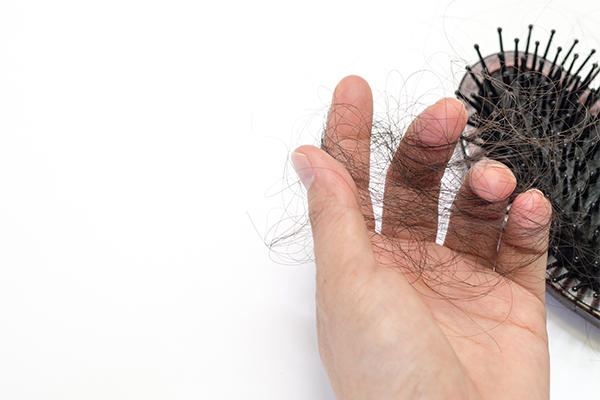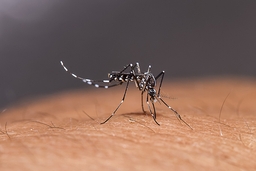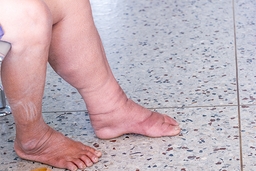Why Are Women at Higher Risk of Lupus?

Lupus can affect everyone, but women are more susceptible to it, especially during their productive years. Many women remain unaware of their immune system's "attack" on their bodies because the symptoms are nonspecific and come gradually. Why is lupus more common among women? How does it impact long-term health? Check out the following explanation.
Lupus is a chronic (lifelong) autoimmune disease that can affect any body part. This condition develops when the body's immune system (defense) can no longer distinguish external pathogens such as viruses, bacteria, and other germs from healthy cells, tissues, or organs.
As a result, the immune system attacks and damages the areas of the body that should be protected.
Read more: Lupus: Incurable but Manageable
So why do women get lupus more often?
Lupus most commonly affects women aged 15 to 44, or during their reproductive age. About 9 out of 10 people with lupus are women.
Until now, experts have still been studying the exact cause of lupus. Some believe that genetic factors cause this disease. Researchers believe genetics, among other variables, has a role in the emergence of lupus, such as
Genetics
Genetic factors play a role in the development of the disease and increase its risk. Either one gene or a combination of genetic components contributes to this disease. This genetic linkage also explains the link between lupus and other autoimmune diseases in the family.
Hormonal factors
Hormonal changes significantly impact the development and worsening of lupus, especially in women. The hormone estrogen, which is involved in the reproductive system and regulates hormone balance, can influence the immune system's response.
This is why lupus symptoms often worsen during menstruation, pregnancy, or when other hormones fluctuate. This condition also explains why women in their productive age are more susceptible to lupus than women who have gone through menopause.
Environment
The environment also plays a role in triggering and worsening lupus symptoms. For example, sunlight's ultraviolet (UV) rays can cause symptoms to flare up. In addition, infections or exposure to certain substances, including some medicines, can cause lupus or worsen previous symptoms.
Understanding these environmental triggers is critical so sufferers can be more aware and control their condition more effectively.
Immune system dysfunction
Lupus is a disorder of the immune system. Instead of protecting the body from external threats such as bacteria or viruses, the immune system of lupus sufferers attacks healthy body tissue.
This incorrect response triggers inflammation and damage to several organs, such as the skin, joints, kidneys, and heart.
Although the signs of lupus can be similar to those of other disorders, experiencing a combination of these symptoms at the same time or at different times can be an early sign of lupus, especially in women.
Some early symptoms to look out for include

Fatigue
Women with lupus often feel exhausted even when they get enough sleep. Fatigue can be prolonged or extreme. Taking supplements, such as vitamin D, may help manage this fatigue, although the effects can vary from person to person.
Hair loss
Thinning hair to bald spots is common in women with lupus. Certain medications or infections can also cause hair loss.
Topical treatments, medications, and lifestyle changes, such as avoiding sun exposure, can help reduce hair loss in some people.
Unexplained fever
A low-grade fever with no known cause may be an early symptom of lupus. This is usually due to inflammation or a response to infection.
Lung problems
Lupus can cause inflammation of the lungs and respiratory system. Women with lupus may develop pleuritis (inflammation of the lining of the lungs) or pneumonitis (inflammation of the lung tissue). These conditions can cause chest pain and shortness of breath.
Skin rash or lesions
A rash or lesions on the face or body can be an early sign of lupus. The rash is usually round and scaly and can appear anywhere on the body. If it appears on the face, nose, and cheeks, the rash resembles a butterfly—a characteristic feature of lupus.
Swollen and painful joints
Lupus can cause swollen and painful joints and morning stiffness. Arthritis is one of the most common symptoms of lupus.
The inflamed joints are usually small joints, such as those in the wrists and fingers. However, it is rare for someone to experience arthritis as the only sign. If left untreated, this condition can lead to joint damage.
Gastrointestinal problems
Nausea, abdominal pain, and vomiting are common in people with lupus, especially in the type of SLE (Systemic Lupus Erythematosus). People with SLE may also develop oral sores, especially on the roof of the mouth. These sores are usually painless.
Dry eyes
About 30% of people with lupus have dry eyes or keratoconjunctivitis sicca. Symptoms include a gritty eye sensation, irritation, pain, and redness. Women with lupus may also have eye inflammation or an eyelid rash.
Health problems that can arise from lupus

Lupus affects the immune system and can lead to serious complications if not treated properly. Lupus can cause a variety of health issues, including:
Heart disease
Lupus increases the risk of coronary heart disease (CAD), the most common type of heart disease. This is because people with lupus tend to have more risk factors for CAD, such as high blood pressure, high cholesterol, and type 2 diabetes.
In addition, the inflammation caused by lupus can damage blood vessels and increase the risk of CAD. Fatigue, joint pain, and muscle pain can make people with lupus less physically active, affecting heart health.
In one study, women with lupus were 50 times more likely to experience chest pain or a heart attack than other women their age.
Osteoporosis
Medications used to treat lupus, such as steroids, can cause bone loss. This condition increases the risk of osteoporosis, when bones become brittle and break easily.
In addition, pain and fatigue from lupus often make sufferers unable to move actively, even though physical activity is vital for maintaining bone strength. As much as possible, keeping the body active can help slow bone loss.
Kidney disease
More than half of all people with lupus experience kidney problems, called lupus nephritis. Kidney problems usually appear within the first five years after lupus symptoms first appear and are one of the most serious complications of lupus.
Unfortunately, kidney inflammation is painless, and sufferers may be unaware of it. Therefore, regular urine and blood tests are crucial to detecting kidney problems early. Treatment will be much more effective if started early.
**
Recognizing early signs and understanding the risks is essential so that lupus can be treated more quickly and serious complications can be prevented. Although it cannot be cured, women with lupus can still live an active and quality life with the proper care and adequate support.



